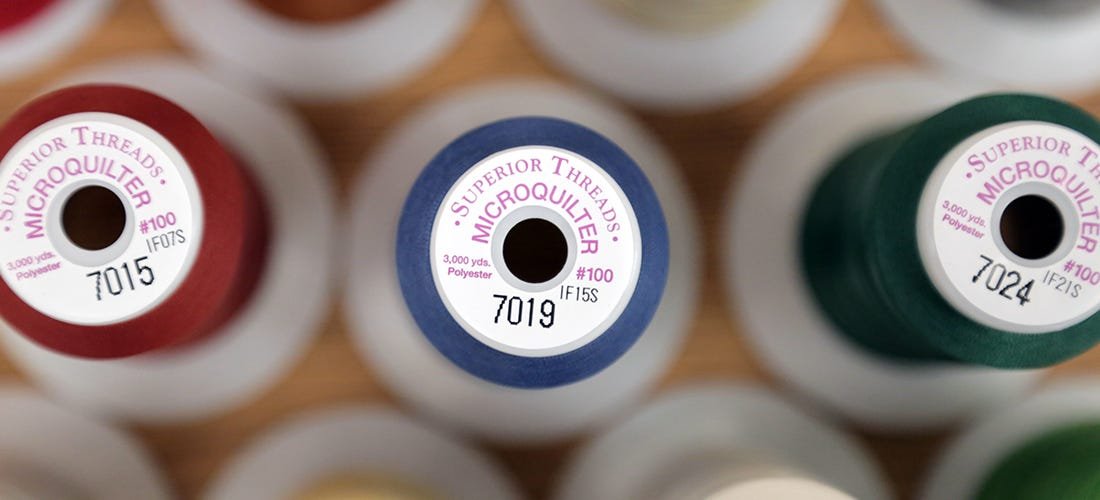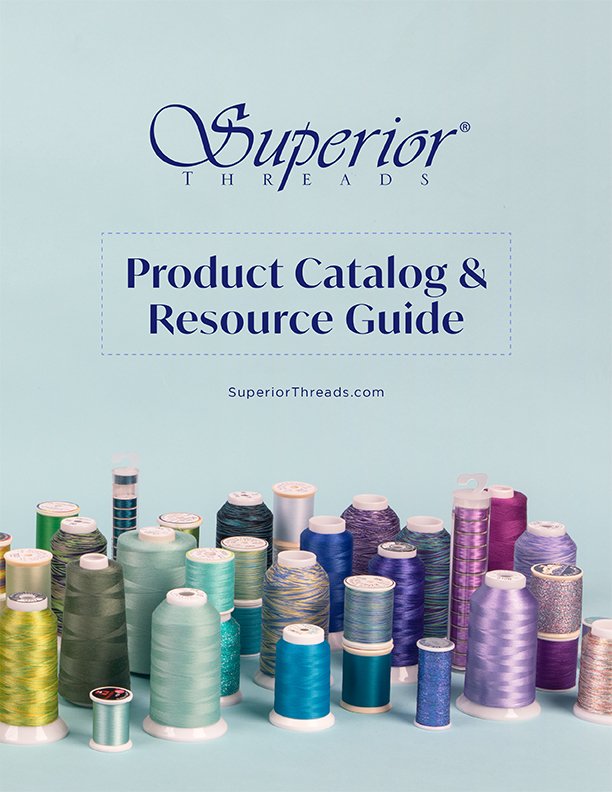Superior Education
THREAD LABELS
- PLY
- WEIGHT
- STAPLE
- MERCERIZED
- GASSED
Thread Labels: What They're Really Telling You
Walking down the aisles of a grocery store, I frequently find myself looking at the labels. Food labels contain so much information and I don’t understand it all, but I do understand that the more sugar, salt, and ingredients which I can’t pronounce that are in a particular food item, the more I should stay away from it (but in reality, it means that it probably tastes really good). Reading the labels helps me understand what specific nutrients, vitamins, and caloric value each product contains and how this will affect my overall diet. Reading the labels helps me choose what to buy and what to leave on the shelf. (Unless it’s chocolate. Then I pretend I don’t know how to read.)
Similarly, thread labels tell a lot about the quality and reliability of the product. Here are some things you might find on a thread label:
Thickness
In most cases, thread thickness is written as a # sign followed by a number. Sometimes the thickness is referred to as weight and can be written with two numbers and wt. We could write an entire article on how many different measurements there are to thread thickness but we are going to generalize here and stick with the # and wt. system. For quilting and embroidery thread, the smaller the number (weight and #), the thicker the thread. The larger the number, the thinner the thread. #30/30 wt.is much thicker than #60/60 wt.

Ply
Ply refers to the number of individual strands twisted together to make the finished thread. The number of plies contributes to the strength of a thread. Most of the threads used for quilting, embroidery, and sewing are either a 2 or 3-ply.
Mercerized
Today, nearly all cotton thread is mercerized. If a label has mercerized cotton written on it, it is probably because there Is nothing else to brag about. Since nearly all modern cotton sewing thread is mercerized, we don’t print it on our labels. Mercerizing is a process of treating cotton thread with a solution, causing fibers to swell. This allows the dye to better penetrate fibers and increase the luster.
Glazed
Glazed thread is a type of thread which has been coated with either wax, starch, resin, or other chemicals. This results in a smooth, glossy thread with a hard finish. Glazed thread is quite a bit stiffer than unglazed thread and has a wire-like look and feel. Glazed cotton threads are recommended for hand quilting only. You do not want the wax coating of a glazed thread running through the tension discs of your sewing machine. Many glazed threads are not usually labeled as such. To check whether or not a cotton thread is glazed or not, unwind a two-three foot section from the spool and if the thread twists like a telephone cord, it’s glazed.
Gassed
One step of the processing of high quality cotton threads is to pass the thread at high rate of speed, over a flame. This process burns the excess fuzz to create a higher sheen. Not all threads are gassed, and you can tell by the excessive amount of fuzz or hairs the thread has. Other terms used for gassed cotton are polished cotton and silk finish cotton.
Staple length
The individual fiber of a cotton boll. We commonly refer to staple in the sense of the length of the individual cotton fiber. The longer the staple, the stronger the thread. If there is no mention of the staple length, assume it is regular (or short) staple thread. Long staple is better than short/regular staple and extra-long staple is the best. If a cotton thread is extra-long staple, the label will proudly state that fact.
This is a whole lot of information to place on a small label! Not all information will be listed, but this will help you determine if you are getting all that you want, need, and hope for. Of course, there is a simpler way to know that you’re getting the top-notch quality thread consistently; choose Superior!

 View Our Product Catalog
View Our Product Catalog